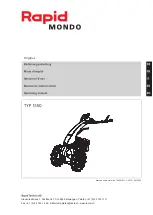
Document:
Date
Created By:
LPN00855X0001A0_A
04-21-2021
TMT
INSTALLATION INSTRUCTIONS
C-WP-C-TR Series
http://lighting.cree.com/warranty | 1-800-236-6800
CAUTION:
Changes or modifications not expressly approved could void
your authority to use this equipment.
This device complies with part 15 of the FCC Rules. Operation is subject
to the following two conditions: (1) This device may not cause harmful
interference, and (2) this device must accept any interference received,
including interference that may cause undesired operation.
This equipment has been tested and found to comply with the limits
for a Class A digital device, pursuant to part 15 of the FCC Rules.
These limits are designed to provide reasonable protection against
harmful interference when the equipment is operated in a commercial
environment. This equipment generates, uses, and can radiate radio
frequency energy and, if not installed and used in accordance with
the instruction manual, may cause harmful interference to radio
communications. Operation of this equipment in a residential area
is likely to cause harmful interference in which case the user will be
required to correct the interference at his own expense.
CAN ICES-005 (A)/NMB-005 (A)
FCC NOTICE
NOTE:
Emergency driver and AC driver must be fed from the same
branch circuit.
NOTE:
For short-term testing of the emergency function, the battery
must be charged for at least one hour. The emergency driver must be
charged for at least 24 hours before conducting a long-term test.
STEP 1:
When AC power is applied, the charging indicator light is illuminated,
indicating the battery is being charged. When power fails, the
emergency driver automatically switches to emergency power, operating
the LED array. When AC power is restored, the emergency driver
returns to the charging mode.
STEP 2:
Although no routine maintenance is required to keep the emergency
driver functional, it should be checked periodically to ensure that it is
working. The following schedule is recommended:
• Visually inspect the charging indicator light monthly. It should be
illuminated.
•
Test the emergency operation of the fixture at 30-day intervals for
a minimum of 30 seconds. When the test switch is depressed, the
LED array should operate.
• Conduct a 90-minute discharge test once a year. The LED array
should operate for at least 90 minutes.
If the luminaire fails any of these checks, consult service personnel.
REFER ANY SERVICING INDICATED BY THESE CHECKS TO
QUALIFIED PERSONNEL
EMERGENCY DRIVER AND AC DRIVER MUST BE FED FROM THE
SAME BRANCH CIRCUIT.
EMERGENCY DRIVER CHECK
(FOR LUMINAIRES EQUIPPED WITH
EMERGENCY DRIVER)
Make the following Electrical Connections:
1. Connect the black luminaire lead to the voltage supply lead.
2. Connect the white luminaire lead to the neutral supply lead.
(Hot 2 for 208/240V wiring)
3. Connect the green ground luminaire lead to the supply ground
lead.
Tuck all wires carefully into wiring chamber ensuring that no wires
are pinched.
ELECTRICAL CONNECTIONS- LUMINAIRE
WITH NO EMERGENCY DRIVER
LINE
GREEN
LINE-BLACK
GROUND-GREEN
NEUTRAL-WHITE
NEUTRAL
OR HOT 2
SUPPL
Y WIRING
LUMINAIRE



























